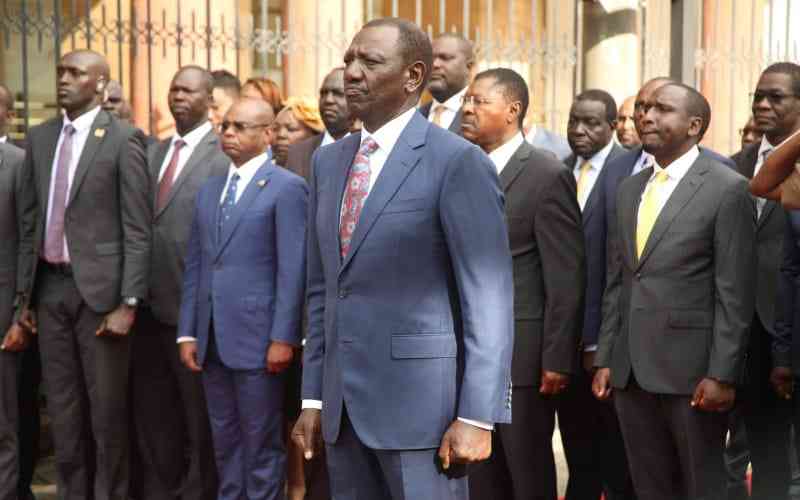NAIROBI: One feature that ties together the manifestos of all major political parties, especially in the run-up to a General Election, is the purported concern for social justice for the poor and vulnerable. This political selling point is meant to propel individuals and their party of choice to power.
Over time, the idea of social justice has evolved to include economic egalitarianism, human rights and equality of opportunity and outcome. When there is a lack of social justice, a climate of poverty is propagated that creates an environment of powerlessness, disinvestment and deprivation.
There is a real sense in which economic conditions, such as poverty, unemployment, inflation and economic growth, impact on youth violence. Study after study has shown that where there are jobless youth, there is likely to be violence, baseless propaganda and economic sabotage.
A lot of youth violence and criminality is likely to be prevalent among the urban poor communities found mostly in slums, where traditional authority and conflict mitigation structures are non-existent.
POLITICAL TOOL
Here, poverty is experienced as a political tool of mobilisation every time there is an election. The ensuing rhetoric does not help poor people rise from extreme poverty simply because the political premise is self-serving. Who would fill stadiums if poor people were made to feel the joys and triumphs of economic freedom?
If poverty is appropriately defined as the structural and social evil that it is, then pro-poor socio-economic approaches and anti-poverty measures will become the essential starting points in poverty reduction.
The effects of poverty on the lives of the urban poor leave most policy and behavioural scientists worried. These effects include family turmoil, unstable households, increased incidences of depression, less social support, inferior schools, single family units, increased hopelessness, drug trafficking and gangs, and poor housing.
Although the Jubilee government should be patted on the back for actually beginning to transform poor urban youth into vital community resources by offering them self-sustaining opportunities, there is still the real challenge of maintaining the momentum beyond the obvious political high points.
Certain factors in urban areas should sound a warning to the country.
One is the low skills and education levels found among the poor, which are strongly associated with joblessness. This status has been linked to criminal activity, early parenthood, long-term unemployment and substance misuse. Further, children of low-skilled parents are vulnerable to low educational attainment.
A workforce with lower skills levels, lower educational attainment and limited aspirations reduces a country’s productivity, economic growth and capacity to compete in a global economy.
Various country reports around the globe have demonstrated persuasively that a skilled workforce produces more new ideas, technologies and innovations.
NEGATIVE IMPACT
When disadvantaged communities are allowed to become larger, they are likely to be exposed to crime. Ever wondered why middle class neighbourhoods close to slums have high walls? This never used to be the case in the 70s and 80s. High crime rates and fear of violent attack tend to reduce community trust and relations, which have a negative impact on investment.
Stay informed. Subscribe to our newsletter
Two is the negative impact growing up in poverty has on health — more hospital admissions, low birth-weight babies, higher accident rates and higher incidences of chronic conditions — which has clear implications for healthcare spending as well as taxpayers’ well-being.
The writer is a mental health researcher. [email protected]
 The Standard Group Plc is a
multi-media organization with investments in media platforms spanning newspaper
print operations, television, radio broadcasting, digital and online services. The
Standard Group is recognized as a leading multi-media house in Kenya with a key
influence in matters of national and international interest.
The Standard Group Plc is a
multi-media organization with investments in media platforms spanning newspaper
print operations, television, radio broadcasting, digital and online services. The
Standard Group is recognized as a leading multi-media house in Kenya with a key
influence in matters of national and international interest.
 The Standard Group Plc is a
multi-media organization with investments in media platforms spanning newspaper
print operations, television, radio broadcasting, digital and online services. The
Standard Group is recognized as a leading multi-media house in Kenya with a key
influence in matters of national and international interest.
The Standard Group Plc is a
multi-media organization with investments in media platforms spanning newspaper
print operations, television, radio broadcasting, digital and online services. The
Standard Group is recognized as a leading multi-media house in Kenya with a key
influence in matters of national and international interest.









